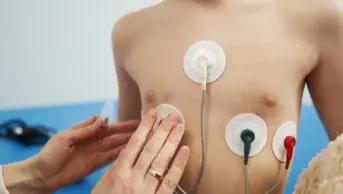
Shutterstock.com
The number of children and young people prescribed melatonin in England has more than tripled over the past nine years, data analysed by The Pharmaceutical Journal has shown.
A total of 117,093 patients aged 17 years or under were prescribed melatonin in the first quarter of 2024/2025, according to the data obtained under the Freedom of Information Act from the NHS Business Services Authority.
This compares with 33,926 patients in the first quarter of 2015/2016, an increase of 245%.
The Pharmaceutical Journal previously revealed in November 2022 that the number of children prescribed melatonin increased by 170% between 2015 and 2022, which experts described as “shocking” at the time.
Melatonin should be initiated under the supervision of a specialist and reviewed every six months, according to the National Institute for Health and Care Excellence.
Commenting on the latest data, Beryl Navti, consultant pharmacist, child and adolescent mental health services at North East London NHS Foundation Trust, said: “Melatonin has become a ‘pacifier’ and often used even when benefits are limited but the challenge for prescribers is the absence of appropriate alternatives.
“Cognitive behavioural therapy for insomnia is not well developed in this population and waiting lists for psychological therapies are also quite long.”
However, Navti added that the increase in prescribing is understandable, highlighting a rise in the number of young people diagnosed with attention deficit hyperactivity disorder (ADHD) and recent licensing of brands for use in children aged 6–17 years with ADHD in whom sleep hygiene has not worked.
“In the past, melatonin was largely prescribed off-label or off-licence in children and young people,” Navti said. “Prescribers now have a licensed option… in children with insomnia, which they consider safer than Z-drugs.”
The rise in melatonin prescribing coincides with a decrease in the prescribing of other medicines used for insomnia in children, including Z-drugs and benzodiazepines.
For example, NHS data show that the number of children and young people prescribed zopiclone has decreased from 631 to 146 children, and the number prescribed diazepam has fallen from 2,833 to 1,627 children, during the same time period.
Dave Branford, independent pharmacy consultant in mental health and intellectual disabilities, said that, although he was previously concerned by the rise in the use of melatonin, his view has now softened.
“Although the evidence to support melatonin is not strong, many people find it effective. The alternatives all have problems and in particular the concerns about habituation linger with most,” he said.
“However, so far, we have no evidence of a melatonin withdrawal problem, although it may rear its ugly head yet.”
There are concerns about whether sleep hygiene has been tried before children are prescribed melatonin and whether the benefits of melatonin are regularly reviewed.
A clinical audit of melatonin prescribing in UK services for children and adolescents in 2022, conducted by Prescribing Observatory for Mental Health, found that just under one-third of children and adolescents starting melatonin had not tried a non-pharmacological intervention and that monitoring and follow-up is inconsistent.
Navti said that expanding services, such as sleep clinics for children, and having clear pathways and standard, evidence-based national guidance for treating sleep disorders in children would help.


